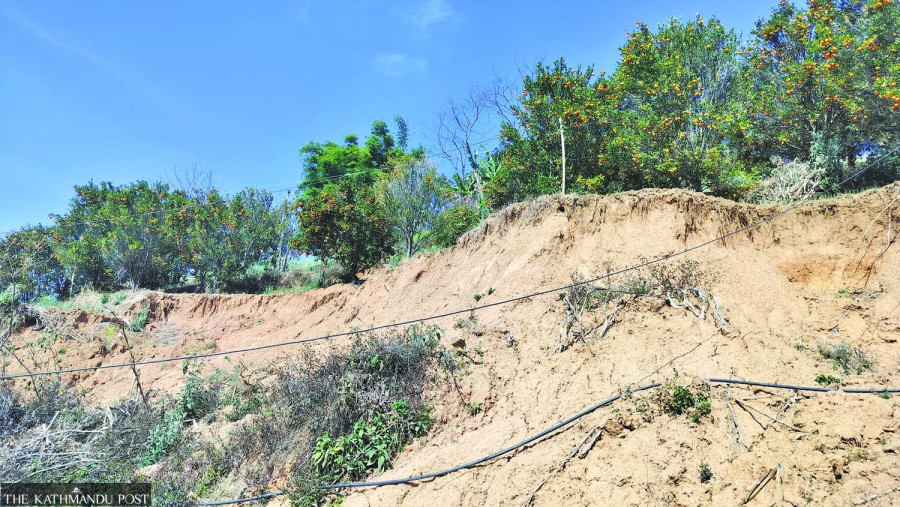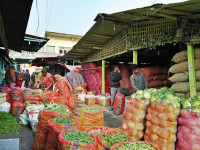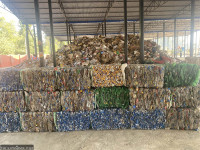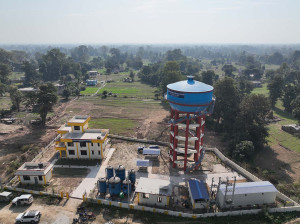Money
Landslides leave Kavre’s orange farms in ruins
Orange farming, a key means of livelihood in areas like Namobuddha, Bethanchowk, Sunthana, and Kusadevi, faces a daunting recovery process.
Jyoti Shrestha
Villages in Bethanchowk Rural Municipality, once vibrant with orange orchards, now lie desolate following the devastating landslides and floods triggered by heavy rainfall in late September last year.
Dharmasala, Pakhringaun, and Sanjelgaun have been severely affected, causing farmers emotional and financial loss.
Before the floods and landslides, villagers launched efforts to transform the region into a thriving orange pocket. They took several initiatives, such as trimming, weeding plants, and managing pests. They expect their income from the orange farm to double this year.
But the natural disaster destroyed everything.
Farmers who once relied on the bountiful harvest for income now face an uncertain future.
Shankar Sanjel, 43, from Sanjelgaun, planted 150 orange trees across six ropani (0.3 hectares) of land, expecting a bumper harvest and around Rs100,000 in income this year. However, a landslide swept away 100 trees, leaving him distraught.
"Even if I plant new trees, the fear of landslides looms. It's hard to imagine rebuilding amidst such risks," he lamented.
According to government estimates, the heavy rainfall in late September triggered floods and landslides in most parts of the country, causing Nepal’s economy to lose Rs46.68 billion.
The floods and landslides from September 26 to 28 caused significant damage to the physical infrastructure sector, followed by the social and productive sectors.
In the productive sector, agriculture and livestock incurred substantial losses.
The assessment report indicates that 65,380 hectares of agricultural land and 26,698 livestock have been affected, resulting in an estimated economic loss of Rs5.88 billion.
The report said that the significant impact on agriculture threatens food security and farmers' livelihoods, who rely heavily on their land and livestock for income.
Kavrepalanchok district was particularly hit, with 3,121 houses fully destroyed and 5,749 partially destroyed.
Kanchhi Koirala, 68, from Haddol, saw 50 of her orange trees on four ropani (1 ropani is 508.74 sq metres) washed away.
She had 300 trees in her orchard on 25 ropani.
Having recently improved her orchard through training, she had hoped to earn Rs600,000 this season. Instead, she now struggles to save the remaining trees as cracks threaten the stability of the hill's slope. "Our fields have disappeared, and even our lives are at risk," she said.
Forced to leave her village, Koirala has temporarily relocated to Khopasi in Panauti in the district, after securing alternative housing by paying Rs350,000 in advance. "Agriculture was the only means of our livelihood. We worked hard, but disasters like this shatter all our hopes," a disheartened Koirala shared.
The landslides have left many farmers in similar predicaments.
Prem Lama from Namobuddha Municipality, who earned up to Rs1 million annually from his orange farm, lost 17 of his 135 orange trees. "The September landslide devastated my garden," he said.
Agricultural officials are now working to assess the full extent of the damage.
Krishna Bahadur Lama, chairman of ward 4 of Bethanchowk rural municipality, confirmed that discussions are underway with local authorities to provide relief to affected farmers.
According to division technician Madhusudhan Dahal, the Bethanchowk rural municipality, which annually produces 216 tonnes of oranges across six hectares, lost 141 ropani (7.17 hectares) of orange orchard to landslides.
Namobuddha Municipality experienced similar losses, with 6 hectares of orange farmland damaged.
Despite these challenges, the district's overall orange production has shown some resilience due to ongoing improvement programmes.
According to Kul Prasad Dawadi, chief of the Agriculture Development Office, Kavrepalanchok, the district produces 7,000 tonnes of oranges annually. The figure was expected to rise to 7,500 tonnes this year, but the landslides have thwarted this growth.
Orange farming, a key livelihood in areas like Namobuddha, Bethanchowk, Sunthana, and Kusadevi, faces a daunting recovery process.
While efforts are being made to support affected farmers, the long-term impact of these landslides on the region’s agricultural landscape remains to be seen.
The International Monetary Fund said that in December 2024, Nepal’s inflation accelerated to 6.1 percent due to a spike in food prices following the floods.
It said that food inflation is expected to ease as transport networks are repaired and agricultural output recovers, improving the food supply.




 19.12°C Kathmandu
19.12°C Kathmandu















